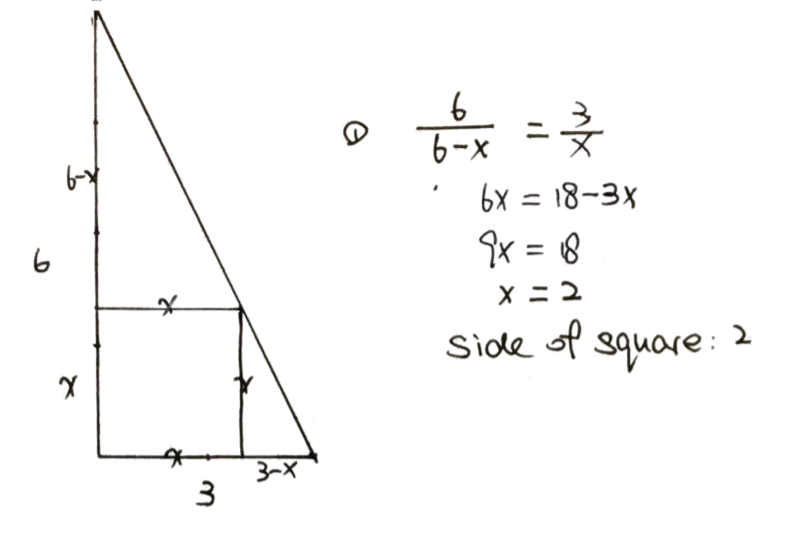Or search by topic
Number and algebra
Geometry and measure
Probability and statistics
Working mathematically
Advanced mathematics
For younger learners
The Square Under the Hypotenuse



- Problem
- Getting Started
- Student Solutions
- Teachers' Resources
This was a very popular problem! We received correct full solutions, or partial solutions, from Zhifang and Sevinch from St George's International School Rome; Carlos at King's College, Alicante; Sanika at PSBBMS in India; Shayan and Angus at St Stephen's School, Carramar; Sammy at Lancing College; Max at West Island School in Hong Kong; Xinrong at Howell's School in Wales; Arnik and Viktor at Wilson's School; Chamundeshwari from Wolsey Hall in India; Dibyadeep from Tanglin Trust School in Singapore; and from Wendy, Ananya and Ana (do get in touch to tell us your schools). Well done, everyone.
Exploring different ways to solve a problem can be a fascinating process. Knowing alternative methods can help you to build strong connections between different areas of mathematics as well as ensuring that you have other approaches to explore when you get stuck (which happens to us all!).
This particular problem challenged you to explore three different methods and we received solutions for each of the methods. Clearly some of you preferred one method over another, depending on your past experiences and favourite ways of working. Do read through each of the approaches below and perhaps try them out for yourself.
Method 1
Method 1 suggested exploring an approach using similar triangles. This was a popular approach, and it was pleasing to see how many of you remembered to check that you did indeed have similar triangles rather than simply assuming that they were similar.
Here's Sammy's approach for finding the length of the side of the square using Method 1:

Method 2
The hint for Method 2 suggested adopting an approach using co-ordinates. Here's Ana's solution for Method 2:

In this case, where a = 6 and b = 3,
p = $\frac{18}{9}$ = 2
Thank you, Ana.
Method 3
Method 3 suggested trying to create rectangles. Here's Sanika's approach using that method:

In this case, where A = 6 and B = 3,
$S = \frac{AB}{A+B} = \frac{18}{9}$ = 2
Having had a chance to read through these solutions, which use three very different methods, which do you prefer and why?
You may also like
Fitting In
The largest square which fits into a circle is ABCD and EFGH is a square with G and H on the line CD and E and F on the circumference of the circle. Show that AB = 5EF. Similarly the largest equilateral triangle which fits into a circle is LMN and PQR is an equilateral triangle with P and Q on the line LM and R on the circumference of the circle. Show that LM = 3PQ
Triangle Midpoints
You are only given the three midpoints of the sides of a triangle. How can you construct the original triangle?

